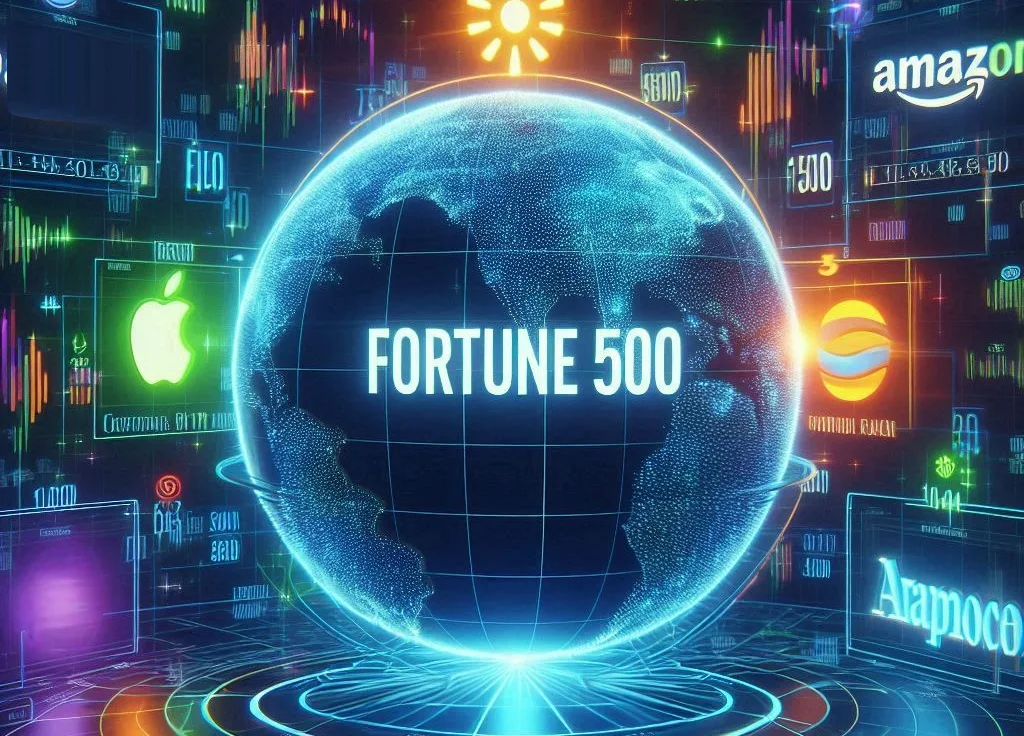Walmart has landed in first place again, as it has for over a decade now. The U.S. retail giant sits at the head of this year’s Fortune Global 500, the annual list ranking companies by revenue. Amazon took second. Behind them came State Grid of China, followed by Saudi Aramco, and then China National Petroleum. It’s a line-up that doesn’t look unfamiliar, but the weight behind these names keeps growing. Taken together, just the ten highest-ranked companies earned more than $4.7 trillion last year. Most of that came from retail, oil, healthcare, or finance, sectors that continue to stretch across borders and markets.
UnitedHealth rises, Apple slips
Apple is still inside the top ten. But not quite where it was. It dropped one spot this year, pushed aside by UnitedHealth Group, which moved from eighth to seventh. That same reshuffle appeared in the U.S.-only Fortune 500 a month earlier, so the shift didn’t come as a surprise. Apple’s fall wasn’t dramatic, but it did reflect the fact that healthcare, as an industry, isn’t slowing. CVS Health and Berkshire Hathaway also stayed strong in the upper tier, keeping U.S. firms in control of most of the top ten.
Global revenue grows slowly, but steadily
The full list of 500 companies brought in $41.7 trillion in revenue last year. That’s about 1.8 percent higher than the year before. Profits came in just under $3 trillion, the second highest total Fortune has ever recorded for its global list. Saudi Aramco, once again, took the lead on earnings. It posted $105 billion in profit alone, the fourth straight year it has held the top position in that category.
Sectors with staying power
Finance continues to dominate in size. There are 121 financial companies in the Global 500. Energy, long a staple of the list, came next with 79. Then came motor vehicles and parts, with 35 firms. The tech sector wasn’t far behind, landing 34. Healthcare had 33. These five areas together made up most of the list and drove nearly two-thirds of total revenue. So while innovation is constant, the largest corporate machines, oil, banks, manufacturers, still hold most of the weight.
China and the U.S. still lead, close together
There were 138 American companies on this year’s list. Greater China, including Hong Kong, Macau, and Taiwan, came in just behind, with 130. Nine out of the ten most profitable companies came from these two countries. That balance hasn’t changed much lately. It’s still China and the United States shaping what this list looks like. Between them, they hold the pulse of global corporate power, even as growth slows in some industries and picks up in others.
The biggest tech names earned big, even with lower ranks
Amazon stayed at number two. Apple remained in the top ten. Alphabet landed at 13, Microsoft showed up at 22. Then came Meta at 41, Nvidia at 66, and Tesla at 106. None of them topped the revenue rankings, but their profits stood out. The group brought in $2 trillion in revenue and earned $484 billion in net income. That’s more than most countries generate in GDP. They didn’t move much in rank, but their financial output still dwarfs what most businesses achieve in years. No other group, outside energy, posted returns that high.
Record number of women CEOs
There are 33 women now leading companies on the Fortune Global 500 list. That’s about 6.6 percent of the total. It’s still low, but it’s the highest count so far. Most of them are in the U.S., though China, France, the U.K., and Brazil have some as well. Some names stood out more than others, Mary Barra at GM, Jane Fraser at Citigroup, Sarah London at Centene, Sandy Xu at JD.com, but the broader pattern is slow, steady increase.
Where these companies are based
Companies on the list are spread across 243 cities and 36 countries. Beijing, Tokyo, New York, Shanghai, and London are home to more of them than anywhere else. London re-entered the top five after a few years off the leaderboard. These cities, often finance hubs or government capitals, keep drawing the biggest corporations. Their infrastructure, access, and labor markets still offer scale.
New companies join, even as others fall away
Nine companies made it onto the list for the first time. Among them were QNB Group, ICICI Bank, and Lithia Motors. They entered from different industries and countries, but their arrival signals movement in the sectors they belong to, especially banking and auto retail. Their exact rankings weren’t near the top, but entry alone is a sign of growth or change worth noting.
What the numbers don’t show
Revenue climbed. Profits held steady. But the backdrop is far less calm. Geopolitical shifts, trade disputes, and fast-moving changes in AI policy are already starting to affect how companies grow, spend, and plan. These issues haven’t upended the rankings just yet, but the next few years may look different. The Fortune Global 500 still captures the biggest players, it always has, but what happens next may depend less on size and more on how these firms navigate what’s coming.

Notes: This post was edited/created using GenAI tools. Image: DIW-Aigen.
Read next: Study Finds SpaceX’s Starlink Satellites Leak Radio Noise Into Protected Bands, Disrupting Earth Telescopes
